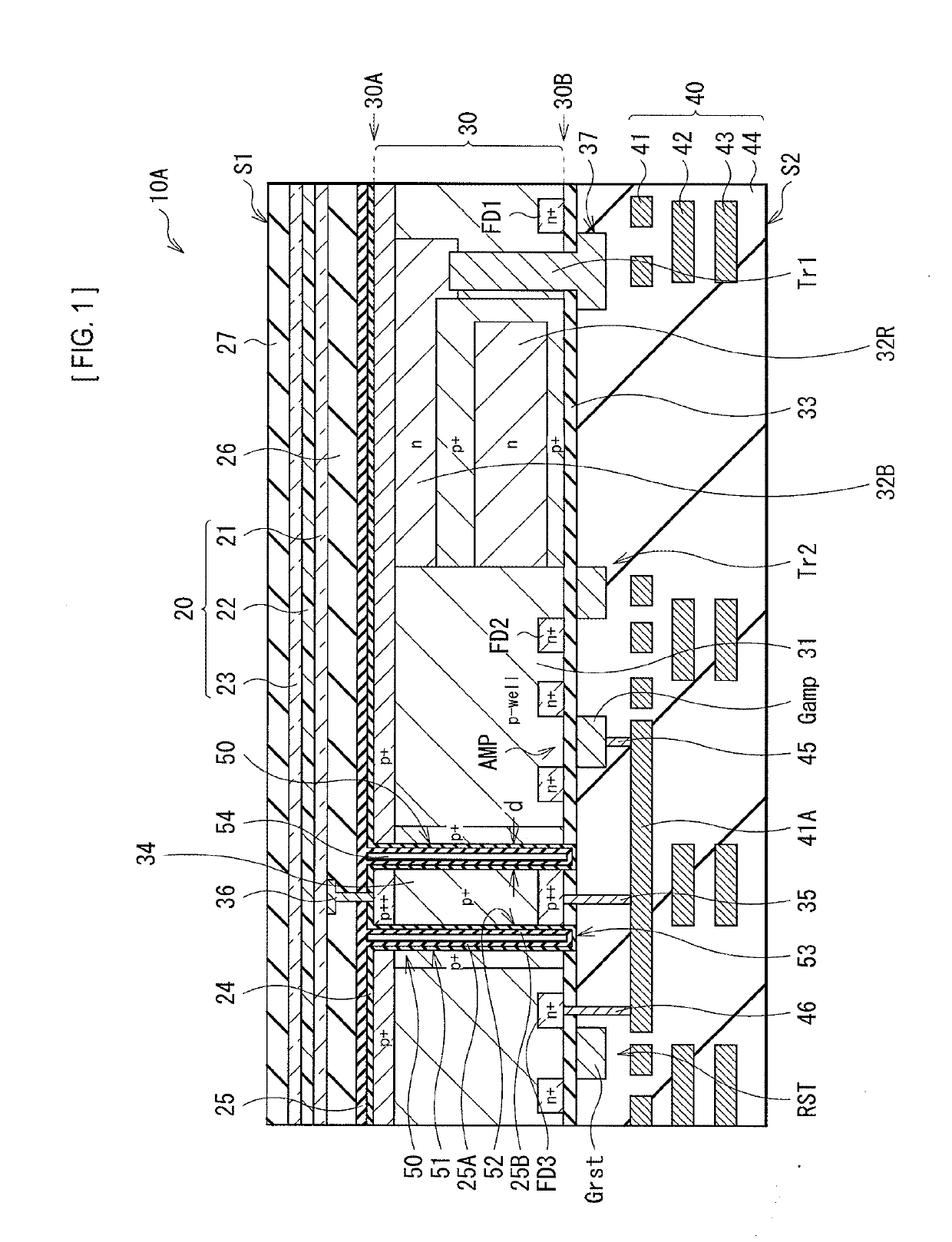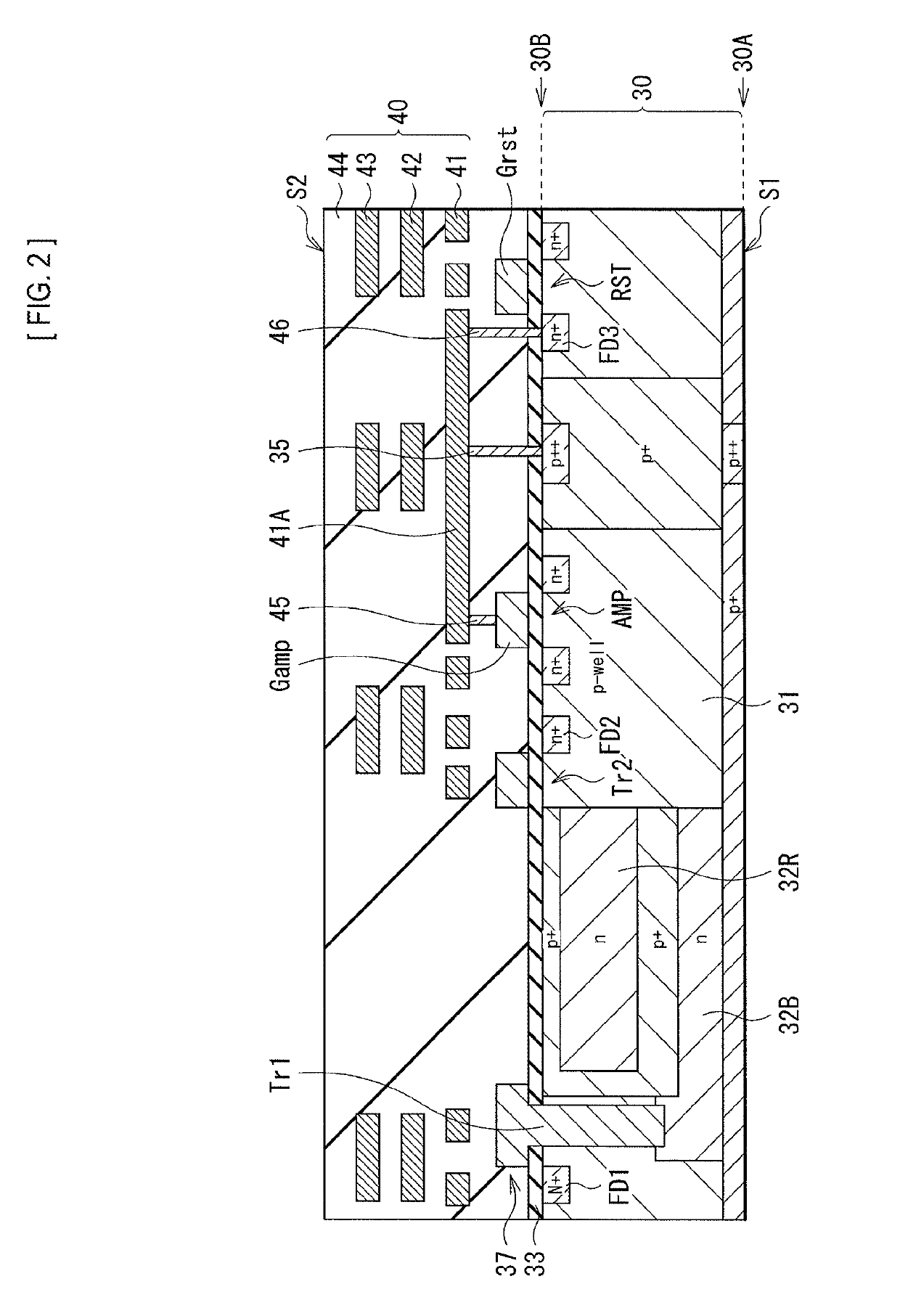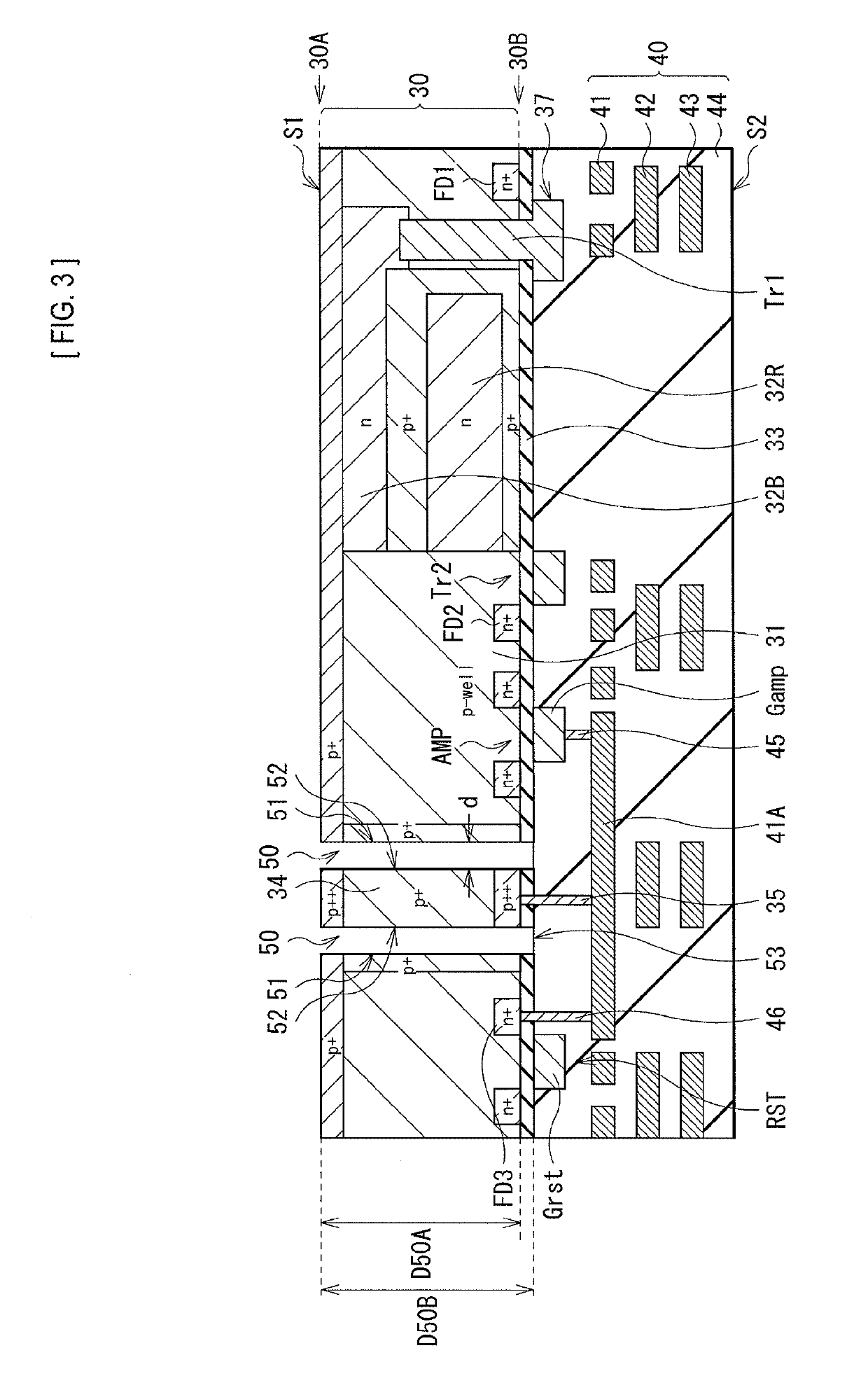Photoelectric conversion element and solid-state imaging apparatus
a technology of conversion elements and conversion elements, applied in the direction of solid-state devices, radiation controlled devices, semiconductor devices, etc., can solve problems such as reducing sensitivity
- Summary
- Abstract
- Description
- Claims
- Application Information
AI Technical Summary
Benefits of technology
Problems solved by technology
Method used
Image
Examples
first embodiment (
1. First Embodiment (Example of a photoelectric conversion layer including three kinds of materials)
1-1. Configuration of Photoelectric Conversion Element
[0028]1-2. Method of Manufacturing Photoelectric conversion element
1-3. Workings and Effects
[0029]2. Second Embodiment (Example of photoelectric conversion layer including two kinds of materials)
application examples
3. Application Examples
4. Examples
1. First Embodiment
[0030]FIG. 1 illustrates a cross-sectional configuration of a photoelectric conversion element (a photoelectric conversion element 10A) according to a first embodiment of the present disclosure. The photoelectric conversion element 10A configures a pixel (a unit pixel P) in a solid-state imaging apparatus (a solid-state imaging apparatus 1: see FIG. 7) such as a CMOS image sensor used in an electronic apparatus such as a digital still camera, or a video camera, for example.
1-1. Configuration of Photoelectric Conversion Element
[0031]The photoelectric conversion element 10A is of a so-called longitudinal spectral type in which, for example, one organic photoelectric converter 20 and two inorganic photoelectric converters 32B and 32R are stacked in a longitudinal direction. The organic photoelectric converter 20 is provided on a side on which a first surface (back side) 30A is located of a semiconductor substrate 30. The inorganic ph...
second embodiment
2. Second Embodiment
[0108]FIG. 6 schematically illustrates a cross-sectional configuration of a photoelectric conversion element (a photoelectric conversion element 10B) of a second embodiment of the present disclosure. The photoelectric conversion element 10B is of a so-called longitudinal spectral type in which one organic photoelectric converter 60 and two inorganic photoelectric converters 32B and 32R are stacked in the longitudinal direction. The photoelectric conversion element 10B of the present embodiment differs from the foregoing first embodiment in that a photoelectric conversion layer 62 includes two kinds of organic semiconductor materials (the first organic semiconductor material and the second organic semiconductor material) that have mutually different mother skeletons. In the photoelectric conversion element 10B, the light entering the organic photoelectric converter 60 is absorbed by the second organic semiconductor material of the photoelectric conversion layer 62...
PUM
 Login to View More
Login to View More Abstract
Description
Claims
Application Information
 Login to View More
Login to View More - R&D
- Intellectual Property
- Life Sciences
- Materials
- Tech Scout
- Unparalleled Data Quality
- Higher Quality Content
- 60% Fewer Hallucinations
Browse by: Latest US Patents, China's latest patents, Technical Efficacy Thesaurus, Application Domain, Technology Topic, Popular Technical Reports.
© 2025 PatSnap. All rights reserved.Legal|Privacy policy|Modern Slavery Act Transparency Statement|Sitemap|About US| Contact US: help@patsnap.com



